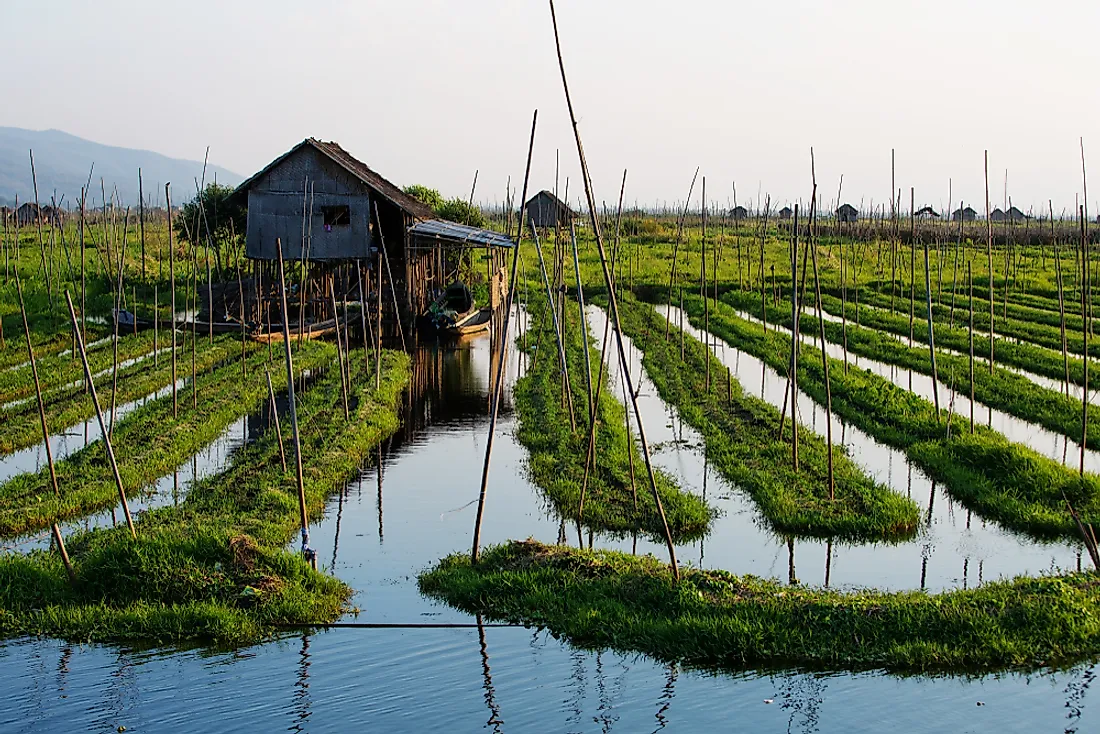What Are The Biggest Industries In Myanmar (Burma)?

Myanmar, or Burma, is an independent country found in Southeast Asia that borders China, India, Thailand, Bangladesh, and Laos. The country is one of the largest countries in Southeast Asia and has a coastline on the Andaman Sea and the Bay of Bengal, which stretches for 1,200 miles. Myanmar covers an area of 261,228 square miles, and as of 2014 it had a population of 51 million inhabitants, and the estimates of 2017 were put at 54 million people. Naypyidaw is the country's capital city while the city of Yangon, also known as Rangoon, is the largest city and it was also the former capital city.
Myanmar is categorized as an emerging economy and in 2017 had a nominal GDP of $69.32 billion, while GDP based on purchasing power parity was $327.6 billion. The estimates for 2018 put the GDP per capita GDP $1,490, while per capita GDP based on purchasing power parity was $6,509. Some of the leading industries in Myanmar include agriculture, mining, and tourism, among others.
Agriculture
Agriculture plays a significant role in the country's economy and account for 60% of the GDP and employs about 65% of the country's labor force. At one time, the country was the leading exporter of rice in Asia, and the crop has continued to be the most important crop in the country. Other important crops cultivated in Myanmar include groundnuts, sesame, beans, pulses, and sugarcane. Other significant agricultural activities in the country include lumbering, fishing, and keeping of livestock. The most common method of cultivation in Myanmar which has been used for a long time is the slash and burn method which entails setting fire on areas of forest to make a field where crops could be planted. After some time, the land could be left follow to grow freely and regenerate more nutrients in the soil. The plants in the abandoned land would typically begin to establish after 1 or 3 years, and after 10 or even 20 years the land would be covered by secondary forest. Occasionally, some of the land in the country is converted into rice paddies, which is a common farming technique used in parts of Eastern and Southern Asia.
Mining Industry
Some of the minerals mined in Myanmar include rubies, pearls, jades, and sapphires. Rubies are by far the most important minerals in the country, accounting for 90% of the world's rubies. Thailand is the largest consumer of the country's gemstones. Some of the rare gemstones such as the blue sapphires and pigeon blood rubies are mined in Mogok mountain area and the valley of rubies.
Tourism
The tourism industry in Myanmar is still developing, and the country has a huge potential because of the numerous attractions in the country. Tourists visiting Myanmar are relatively low compared to visitors the neighboring countries, and it is largely because of the current political situation in the country.
Oil and Gas
Myanmar is one of the significant producers of petroleum and natural gas in Asia, and it is home to one of the oldest petroleum industries in the world. The first crude oil to be exported out of the country was in 1853, and today the country is among the leading producers of natural gas in the continent of Asia. The country has not been able to develop the oil and gas industry into a significant contributor the country's economy, and this is because of several years of isolation of the country, sanctions from the international community, poor government policies and investments, and the lack of technical capacity. However, there have been slow political reforms in the country, particularly in the recent past, which has resulted in the international community lifting the sanctions.
Challenges Facing Myanmar
In 2016, Myanmar witnessed the first civilian government after more than half a century of military dictatorship. Several decades of sanctions and economic mismanagement has affected the country so much. Rail and road networks have been neglected for several years, and according to the Asian Development Bank, the country needs at least $60 billion for upgrades for up to 2030. The illegal drug trade is still widespread in the country, particularly in the notorious Golden Crescent, which borders Laos, China, and Thailand. The country is also the world’s second-largest source of Opium after Afghanistan.











